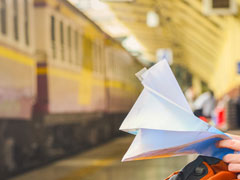Glasgow, Scotland
Rail Guide to Glasgow

Going to Glasgow?
Use our Trip Planner and start your trip here.
Information
| Currency | Pound sterling |
| Local language | English |
| Country | Scotland |
Things to do
At the heart of the city George Square is a good point from which to start. To the Southwest on Royal Exchange Square is the Gallery of Modern Art, housed in an 18th century mansion it displays works by international artists such as Warhol and Hockney as well as local Scottish artists. As with many of Glasgow’s attractions the admission is free. The square itself is lined with boutiques and cafes and leads on to one of Glasgow’s shopping precinct namely Buchanan Street. The city is a shopper’s paradise and more retail therapy can be found in the St Enoch Centre, on Princes Square and in Merchant City.Without a doubt however Glasgow’s top cultural attraction is the world famous Burrell Art Collection, an unbelievable display of over 8,000 works of art donated to the city by the philanthropist Sir William Burrell in 1944. Set in Pollock Country Park, south of the River Clyde, it is crammed full of priceless antiquities from around the world.
Still south of the river on Glasgow Green is the 19th century People’s Palace, which contains a fascinating collection, depicting the life of the city. Close by, the Barras, is Glasgow’s oldest market, a far cry from the expensive designer stores over in Merchant City but all the more charming for it.
Finally, generally speaking the city’s bohemian West End (where the university can be found) contains not only many fine restaurants and pubs on its main thoroughfare called Byres Road, but also many smaller shops on its cobbled mews and lanes with an overall lively atmosphere.
Local transport
The city centre is best explored on foot however you will need to use public transport to visit some of the major attractions, which are further out. The transport network comprises buses, urban trains and the underground (affectionately referred to as Clockwork Orange) which has two circular routes that are easily navigated and often the best way to travel between the city centre and the West End. Finally, the bus service is comprehensive and you can buy your rickets on board by stating your destination but make sure you have plenty of change. As with most major cities there are several saver ticket options available if you intend to make repeated use of the public transport system.Recommended places and events to visit in Glasgow

Event
(During June)
West End Festival Various venues around Glasgow
West End Festival Various venues around Glasgow


